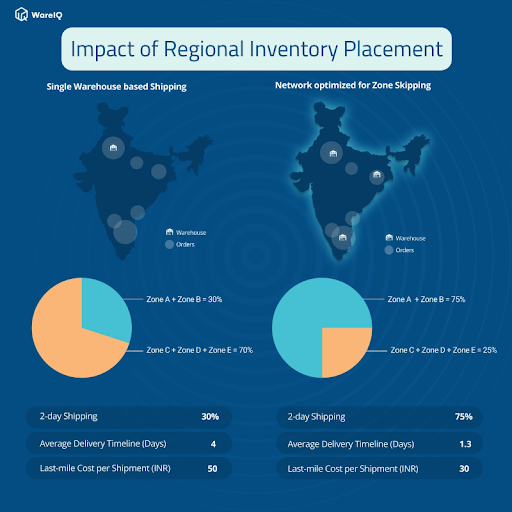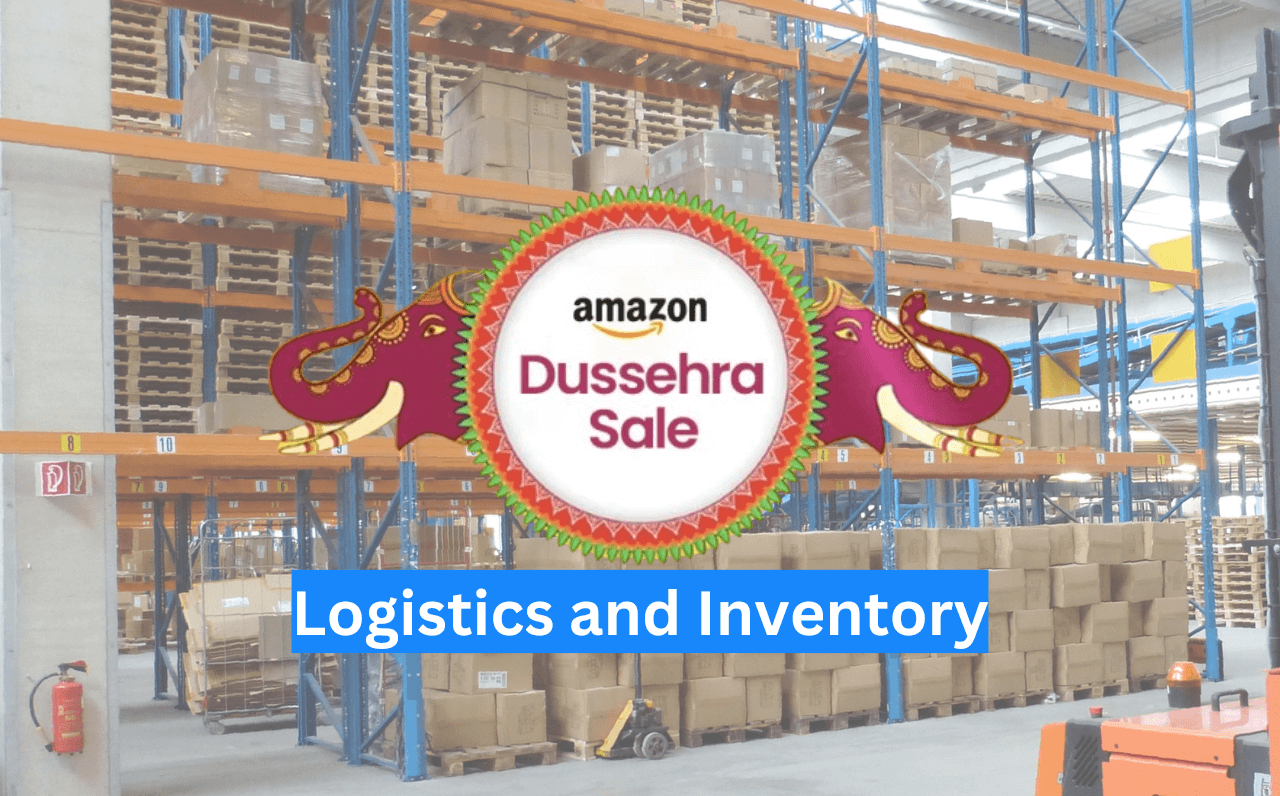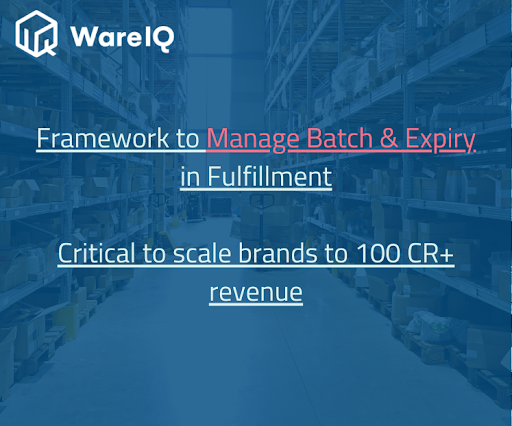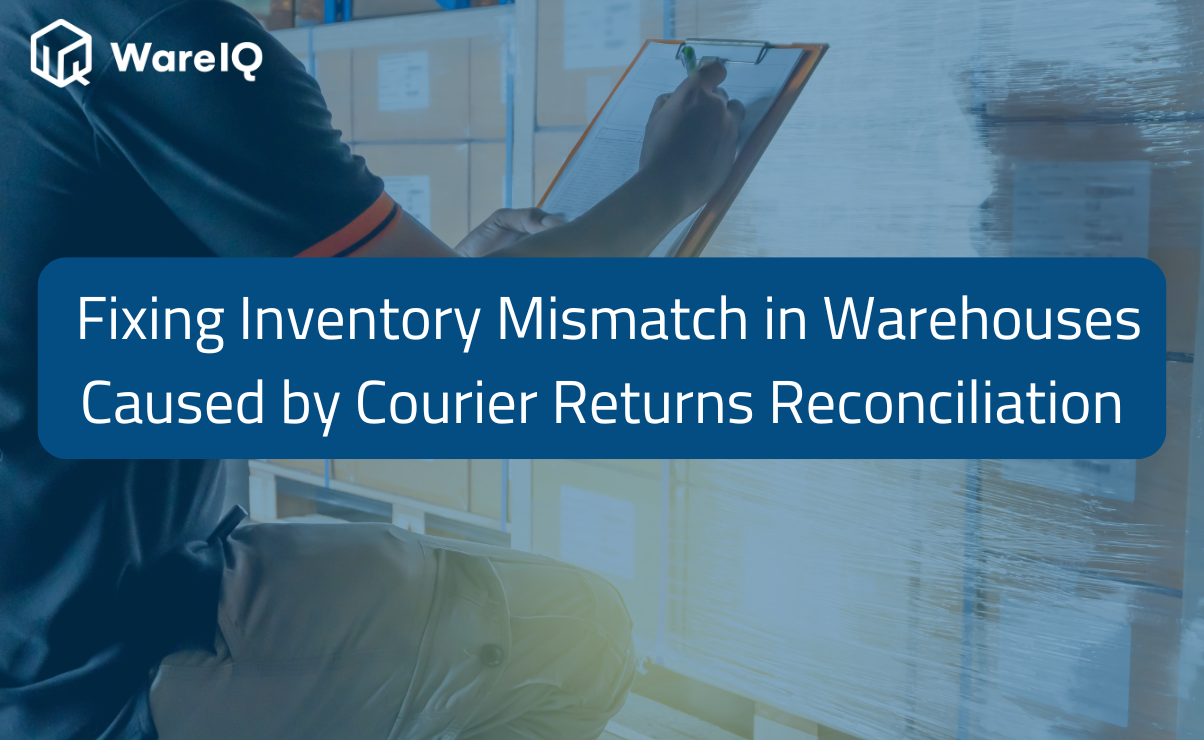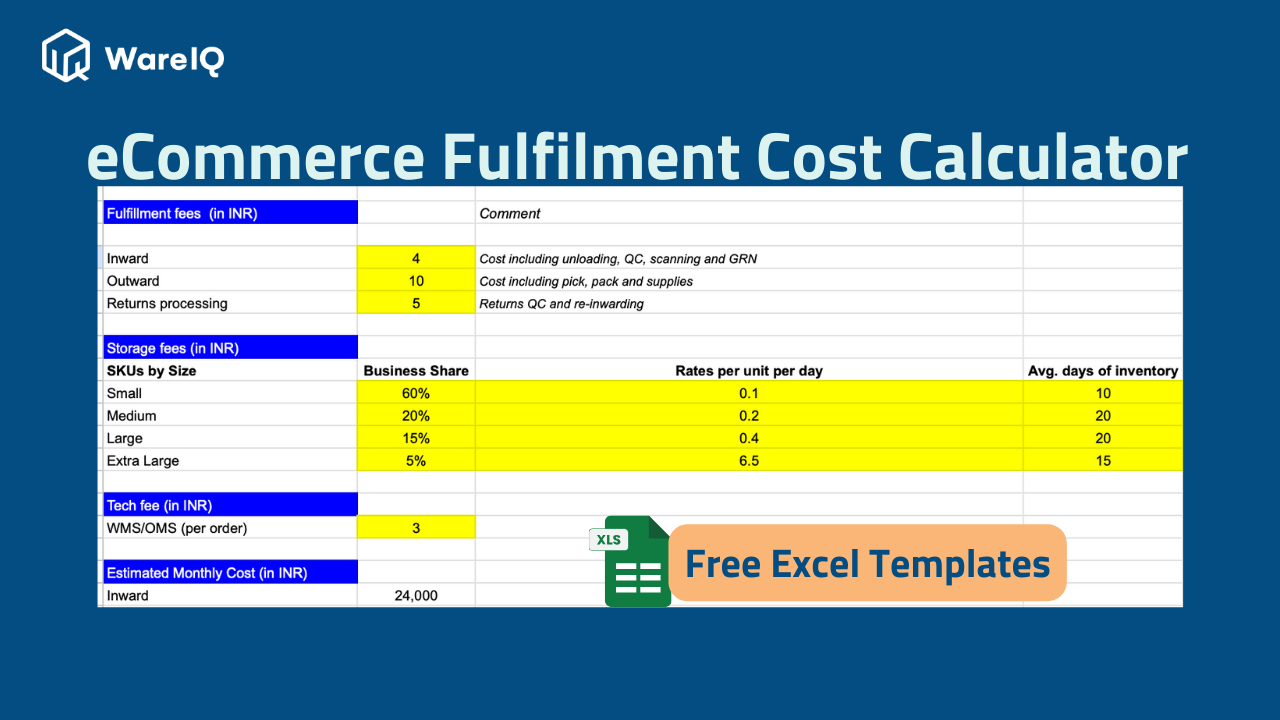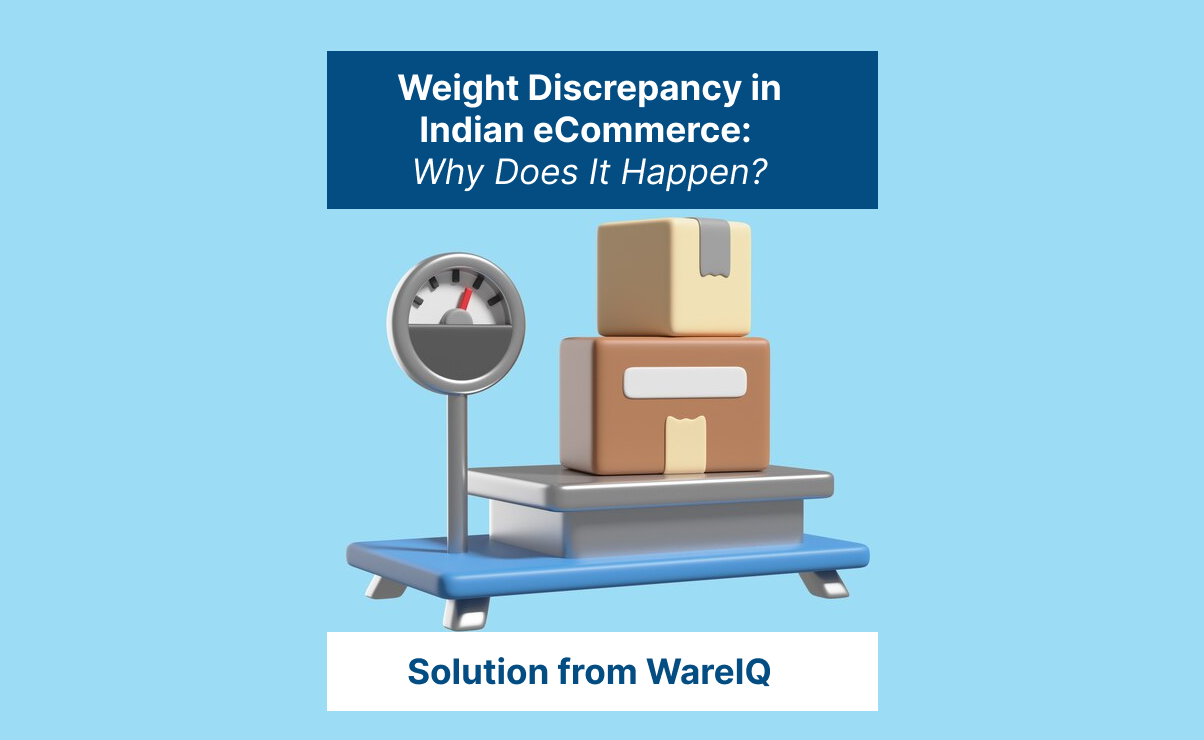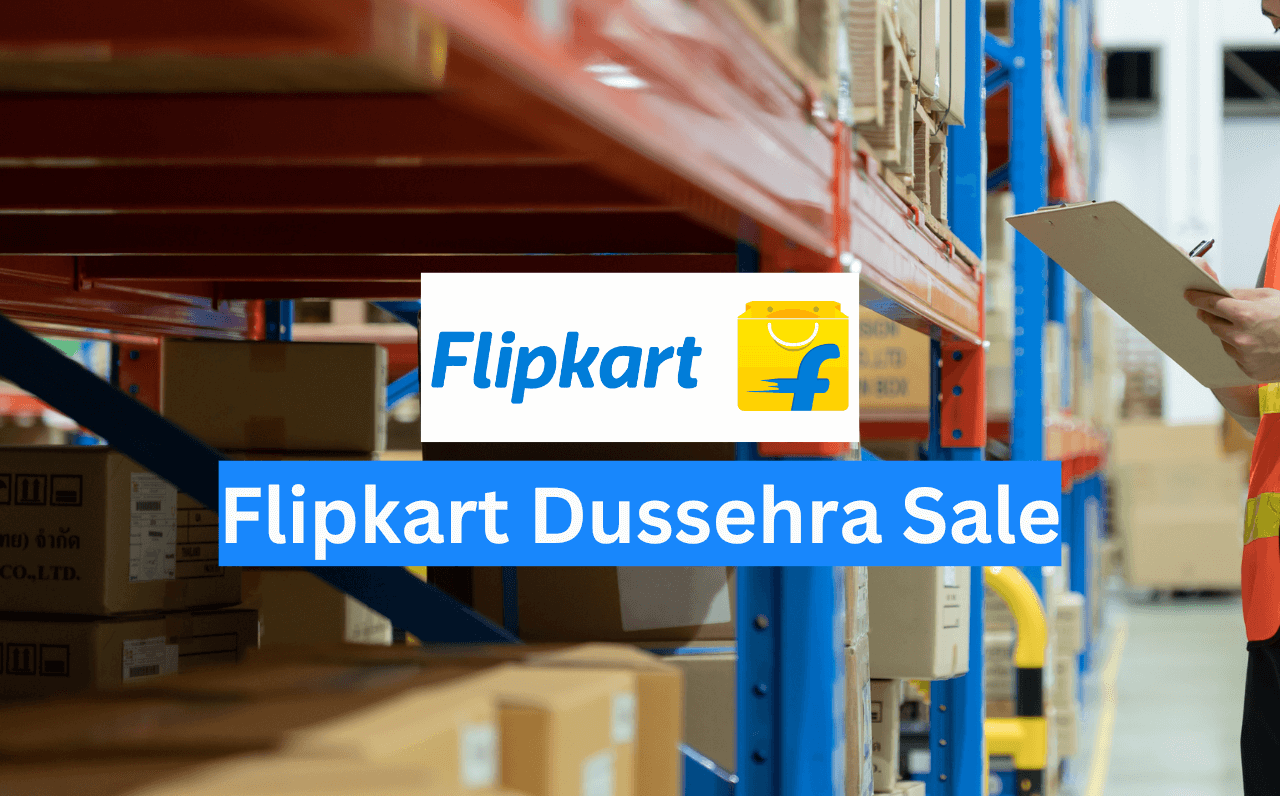
Flipkart Big Billion Days Sale 2024: Inventory Tips for E-Commerce Sellers
The Flipkart Big Billion Days Sale is set to commence on September 27, 2024, with exclusive early access for Flipkart Plus members starting a day earlier. This annual event has become a cornerstone of the Indian e-commerce landscape, drawing millions of shoppers eager to take advantage of huge discounts across various product categories. The Big Billion Days (TBBD) 2023, Flipkart's premier festival sales event, had a record 1.4 billion users visit Flipkart's platform., showcasing its immense popularity and the critical role it plays in festive shopping during Dussehra and Diwali. Effective inventory management is paramount for e-commerce sellers, particularly those participating in the Flipkart Big Billion Days Sale. Understanding key inventory tips can significantly impact success with the potential for high traffic and rapid sales. This article will delve into essential strategies tailored for sellers looking to optimise their inventory during this crucial period, ensuring they can meet customer demand while maximising profitability. Demystifying the Flipkart Big Billion Days Sale The Flipkart Big Billion Days Sale is a testament to the growth and evolution of e-commerce in India. Since its inception in 2014, the event has consistently broken sales records, with the previous year generating over ₹20,000 crores in revenue within just one week. This staggering figure underscores the immense potential for sellers to reach a vast customer base and drive significant sales during this period. Timing and Duration The Flipkart Big Billion Days Sale typically aligns with the festive season in India, coinciding with major celebrations like Dussehra and Diwali. 2024, the sale will commence on September 30, with exclusive early access for Flipkart Plus members starting a day earlier on September 29. The event will span multiple days, allowing sellers to capitalize on the heightened demand throughout the sale period. Product Categories and Discounts One of the most attractive aspects of the Flipkart Big Billion Days Sale is the deep discounts offered across a wide range of product categories. Customers can expect discounts ranging from 50% to 80% on electronics and accessories, with smart TVs and home appliances seeing discounts of up to 80%. Smartphones from popular brands like Nothing, Realme, Mi, and Infinix will feature significant price cuts, making it an ideal time for customers to upgrade their devices. Additional Benefits and Offers To further enhance the shopping experience, Flipkart collaborates with various banks and financial institutions to offer exclusive benefits during the Big Billion Days Sale. Customers can avail of instant discounts using select credit or debit cards and no-cost EMI options on premium products like smartphones and TVs. Exchange offers and cashback schemes also contribute to the overall savings, making the sale even more attractive for customers. Related read: How to Sell on Flipkart: Guide to Become a Flipkart Seller in 2024 Inventory Tips for Flipkart Big Billion Days Sale As the Flipkart Big Billion Days Sale approaches, effective inventory management becomes crucial for sellers aiming to capitalise on this high-demand period. With millions of shoppers expected to flock to the platform, having a well-structured inventory strategy can maximise sales and ensure customer satisfaction. Here are essential inventory tips tailored specifically for the Flipkart Big Billion Days Sale. 1. Demand Forecasting Accurate demand forecasting is the foundation of successful inventory management. Sellers should analyse historical sales data and market trends to predict which products will be in high demand during the sale. This approach helps in stocking the right quantity of items, minimizing the risk of stockouts and overstocking. Utilising analytics tools can provide insights into past sales patterns, enabling sellers to make informed decisions about inventory levels. 2. Real-Time Inventory Tracking Implementing advanced inventory management software allows sellers to track stock levels in real-time. This capability ensures that sellers are always aware of their inventory status and can promptly replenish stock as needed. Real-time tracking prevents overselling and enhances the overall shopping experience for customers, as they can rely on accurate product availability information during the Flipkart Big Billion Days Sale. 3. Safety Stock Management Maintaining a safety stock buffer is essential for managing unexpected spikes in demand during the sale. This strategy helps prevent stockouts, ensuring continuous product availability, particularly when popular items are in high demand. Sellers should calculate optimal safety stock levels based on historical sales data and lead times, allowing them to respond swiftly to changes in consumer behaviour. 4. SKU Optimization Identifying and prioritising fast-moving items is vital for maximising sales during the Flipkart Big Billion Days Sale. Sellers should focus on high-demand products and optimise their stock-keeping units (SKUs) accordingly. This means having sufficient quantities of popular items while reducing stock levels of slower-moving products, ensuring that inventory aligns with consumer preferences. 5. Supplier Coordination Establishing strong relationships with suppliers can lead to better terms and quicker replenishments. Sellers should communicate their inventory needs well in advance, ensuring timely stock delivery, especially given the logistical challenges that often arise during peak sales. Collaborating with suppliers can also provide opportunities for negotiating favourable terms that benefit both parties. 6. Warehouse Optimisation Efficient warehouse management is critical during high-demand events like the Flipkart Big Billion Days Sale. Sellers should optimise their warehouse layout to facilitate quick picking and packing, reducing order fulfilment times. Additionally, training staff on efficient handling practices can enhance productivity and ensure that orders are processed swiftly. By implementing these inventory tips for the Flipkart Big Billion Days Sale, sellers can better prepare for the influx of customers and maximize their sales potential. A well-managed inventory meets customer demand and enhances overall satisfaction, contributing to a successful sales event. Flipkart Big Billion Days Sale Strategies for Sellers The Flipkart Big Billion Days Sale presents a unique opportunity for sellers to boost their sales and enhance their brand visibility significantly. To make the most of this highly anticipated event, sellers must adopt effective strategies that align with the dynamics of this massive sale. Below are key strategies to help sellers maximise their success during the Flipkart Big Billion Days Sale. 1. Optimize Product Listings A well-optimized product listing is essential for attracting customers during the sale. Sellers should ensure that their product titles, descriptions, and images are clear, engaging, and informative. Including relevant keywords can improve visibility in search results, making it easier for potential buyers to find products. Regularly updating product information and utilising Flipkart's bulk update features can streamline this process. 2. Leverage Marketing Campaigns Effective marketing drives traffic to your listings during the Flipkart Big Billion Days Sale. Sellers should consider utilising social media platforms to create buzz around their products. Collaborating with influencers or running targeted ads can amplify reach and engagement. Additionally, Flipkart's promotional tools, such as sponsored ads and banners, can enhance visibility during the sale period. 3. Implement Competitive Pricing Strategies Pricing plays a pivotal role in consumer purchasing decisions during sales events. Sellers should analyse competitor pricing and consider offering attractive discounts or bundle deals to entice buyers. Dynamic pricing strategies can help adjust prices in real-time based on demand fluctuations, ensuring sales competitiveness. 4. Prepare for Increased Demand Sellers must anticipate a surge in orders during the Flipkart Big Billion Days Sale and prepare accordingly. This includes ensuring adequate inventory levels and streamlining order fulfilment processes. Inventory management software can help track stock levels and automate reorder processes, minimising the risk of stockouts. 5. Focus on Customer Engagement Engaging with customers before, during, and after the sale can foster loyalty and encourage repeat purchases. Sellers should respond promptly to customer inquiries and provide excellent customer service throughout the buying process. Encouraging customer reviews and feedback can also enhance credibility and attract more buyers. 6. Utilise Data Analytics Data analytics is a powerful tool for decision-making during the Flipkart Big Billion Days Sale. Sellers should analyse past sales data to identify trends and consumer preferences, allowing them to tailor their inventory and marketing strategies effectively. Leveraging analytics tools provided by Flipkart can offer insights into customer behaviour, helping sellers make data-driven decisions. By employing these Flipkart Big Billion Days Sale strategies for sellers, businesses can effectively navigate this bustling sales event and maximise their potential for success. A proactive approach will ensure sellers are well-prepared to meet customer demand while enhancing their overall sales performance. How Can WareIQ Empower Sellers to Manage Their Inventory During Flipkart Big Billion Days? As the Flipkart Big Billion Days Sale approaches, effective inventory management becomes paramount for sellers looking to capitalize on this lucrative opportunity. WareIQ, a Y-Combinator-backed eCommerce full-stack platform, offers a comprehensive solution to streamline inventory management and fulfilment processes across various channels. Here’s how WareIQ can help sellers navigate the complexities of inventory management during this high-demand period. 1. Comprehensive Fulfilment Network WareIQ boasts a pan-India network of Seller Flex and FAssured-compliant fulfilment centres strategically located across 12+ cities. This extensive reach enables sellers to store inventory closer to customers, ensuring faster last-mile delivery across over 27,000 pin codes. By leveraging this network, sellers can significantly reduce shipping times and enhance customer satisfaction during the Flipkart Big Billion Days Sale. 2. Multi-Channel Fulfilment Platform The platform provides seamless plug-and-play integrations with major marketplaces such as Amazon, Flipkart, Myntra, and Nykaa, as well as D2C platforms like Shopify and Magento. This multi-channel fulfilment capability allows sellers to manage their inventory across various sales channels effortlessly. With analytics tools integrated into the system, sellers can assess operational performance and make informed decisions to optimise inventory levels. 3. AI-Led Inventory Planning WareIQ’s Inventory LogIQ is an AI-driven solution for multi-channel inventory planning. This tool minimises stockouts by automating replenishment processes based on real-time demand forecasts. By utilising advanced analytics, sellers can ensure they have the right products available at the right time, thereby maximising sales opportunities during the Flipkart Big Billion Days Sale. 4. Streamlined Returns Management Returns can be a significant challenge during high-volume sales events. WareIQ offers a tech-enabled returns quality control solution that captures and centrally stores evidence of damaged or missing returned products. This feature helps eliminate marketplace claims rejections and ensures sellers can manage returns efficiently, protecting their revenue and reputation. 5. Dedicated Seller Support WareIQ provides extensive seller enablement support, including dedicated account managers who assist with various operational needs such as GST registration, NDR (Non-Delivery Report), and COD (Cash on Delivery) verification. This level of support ensures that sellers can focus on their core business activities while WareIQ handles inventory management and logistics complexities. By partnering with WareIQ, sellers can leverage a robust fulfilment platform that enhances operational efficiency during the Flipkart Big Billion Days Sale. With comprehensive solutions tailored for inventory management and logistics, WareIQ empowers sellers to meet customer demand effectively while maximizing their sales potential during this critical shopping event. Related read : Flipkart Video Management System (VMS) for Sellers Conclusion The Flipkart Big Billion Days Sale offers a prime opportunity for e-commerce sellers to enhance their sales and brand visibility. By implementing effective inventory management strategies—such as analyzing past sales data, optimising stock levels, and utilising real-time tracking—sellers can meet the surge in customer demand. Additionally, focusing on marketing collaborations and attractive promotions will further drive sales. Preparing these strategies will be crucial for maximising success during the Flipkart Big Billion Days Sale as the event approaches. You may also like to read: Flipkart Dussehra Sale 2024 Inventory Management FAQs About Flipkart's Big Billion Days Sale When does the Flipkart Big Billion Days Sale 2024 start?The Flipkart Big Billion Days Sale 2024 will commence on September 30, 2024, with exclusive early access for Flipkart Plus members starting a day earlier on September 29. The sale will run for multiple days, aligning with the festive season of Dussehra and Diwali.What kind of discounts and offers can customers expect during the sale?Customers can expect discounts ranging from 50% to 80% on electronics and accessories, with smart TVs and home appliances seeing discounts of up to 80%. Smartphone brands like Nothing, Realme, Mi, and Infinix will feature significant price cuts, exclusive bank offers and no-cost EMI options on premium products.How can Flipkart Plus members benefit from the Big Billion Days Sale?Flipkart Plus members will enjoy exclusive early access to the sale, starting a day before the general public. This allows them to secure deals on popular products before they sell out. Plus members also earn SuperCoins with every purchase, which can be redeemed for additional benefits.What are some tips for making the most of the Flipkart Big Billion Days Sale?To maximise savings during the sale, customers should activate their Flipkart Plus membership, create a wishlist of desired products in advance, stay updated on flash sales and offers, and use bank offers and exchange deals. Planning purchases and staying informed will help ensure they secure the best deals before stock runs out.How can sellers optimise their inventory for the Flipkart Big Billion Days Sale?Sellers can optimise their inventory by analysing past sales data to forecast demand, implementing real-time tracking to prevent stockouts, maintaining safety stock buffers, prioritising fast-moving SKUs, coordinating with suppliers for timely replenishments, and optimising warehouse operations for efficient order fulfilment. Effective inventory management is crucial for meeting customer demand during high-volume sales.
September 20, 2024
